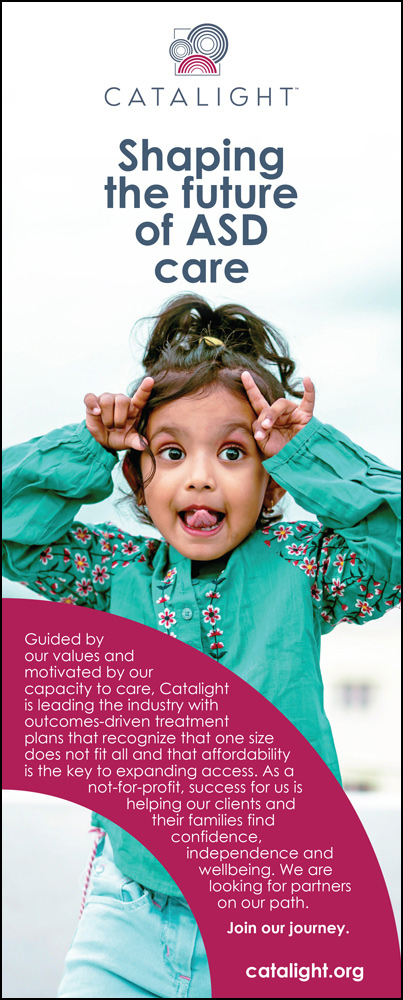The COVID-19 pandemic brought significant challenges and opportunities for psychologists conducting diagnostic evaluations for people with suspected autism spectrum disorder (ASD). While there had been research on telediagnostics for ASD, at the start of the pandemic these procedures had not been widely applied or accepted as valid means of diagnostic practice. For this reason, many families were told they had to wait for an evaluation until it could be conducted within the health guidelines set forth by the CDC and local government. This significantly increased already long wait times for families. In addition, referrals for individuals suspected of having ASD continued to rise as many families now had more time at home with their child than ever before. This intensive time together gave caregivers insights into their children’s social skills and communication – leading some families to wonder if their child had ASD.

With the increase in referrals for ASD evaluations and stated restrictions of COVID-19 related to sheltering-in-place, the field of psychology was put into a position to adapt in order to meet the ever-growing need of their communities. Prior to the pandemic, all ASD evaluations were conducted in person, but with unprecedented times came a need to adjust our process. As the statewide shelter-in-place order was extended in California, it became obvious to some psychologists that adapting to the current reality would include telediagnostic services. Our task was to provide high-quality and thorough telediagnostic evaluations.
There are relatively few psychologists with specialized training in ASD diagnostics and those numbers are even lower in rural and underserved communities. Telediagnostics provides a pathway for families to receive an evaluation who otherwise would not be able to or would need to be put on a lengthy waitlist. ASD diagnosis opens the door to appropriately targeted services and can improve the quality of life for individuals and their families.
Research on telediagnostics commenced before the pandemic, demonstrating good results with high acceptability of the procedures by participants (Juárez et al., 2018; Alfuraydan et al., 2020). Of utmost importance, a high agreement was found between face-to-face and telediagnostic administrations for young children suspected of having ASD (Stavropoulos et al., 2022). With this research in place, we developed a battery of assessments mirroring our previous in-person procedures. This battery was aligned with the available research and provided insight into the individual’s cognitive, social-emotional, and behavioral presentation, as well as created a space to observe any restricted and repetitive patterns of behavior. Once initiating our telediagnostic program, we saw exponential advancement in our capacity to provide quick and accessible services, drastically shortening the families’ wait times and increasing our ability to serve individuals who may have otherwise fallen through the cracks.
For young children suspected of having ASD, telediagnostics offers psychologists the opportunity to observe the child in their natural environment with their caregiver, where children are most comfortable. This allows for a clear picture of what happens in real-world situations. Upwards of 70% of people with ASD experience some form of anxiety (White et al., 2009), and having the option to provide a telediagnostic evaluation where the person can participate from their most familiar environment can decrease stress and anxiety regarding the whole diagnostic experience. Additionally, we have found that there are limiting factors in requiring patients to come into offices for evaluations. Some of these factors include a lack of transportation, severe behavioral or emotional challenges that limit comfort in going into offices, certain disabilities, long distances to drive for the evaluation and high gas prices. Telediagnostics can truly address the historic inequity in quality care and diagnostic evaluations.
Reflecting on these last two and a half years it is now difficult to imagine a clinical world without telediagnostics because it opens up access to care so readily, fitting into individual’s and family’s lives. While there will be times when telediagnostic is clinically contraindicated, or a telediagnostic service will require in-person follow up, it appears to our organization that this will become more the exception than the rule. Post-pandemic, many families are now more comfortable and knowledgeable about an array of telehealth services as research is continuing to be published regarding the effectiveness of telehealth services across disciplines and services (e.g., psychotherapy, parent training, coaching). However, there are families who would still prefer to be seen in-person due to their discomfort of managing the technology necessary for a successful telediagnostic session or not having sufficient space to engage in the play behavioral observation. Organizations should be conducting a thorough screening of patients and their caregivers to determine if they would be best suited for an in-person evaluation. If that screening does not occur, the family may miss valuable time due to needing to schedule follow-up visits or receiving incomplete evaluations.
In summary, telediagnostics demonstrates high agreement to in-person ASD evaluations, meaning that no matter how the evaluation is completed, as long as the psychologist is trained and knowledgeable about ASD and the evaluation procedures, the results will be the same. We know that many families experience a long wait between receiving a referral for an ASD evaluation and receiving the services. Research consistently shows that early identification and intervention are critical for positive outcomes in acquiring speech (Ben-Itzchak & Zachor, 2007; Tiura et al., 2017). Catalight has found that our high-quality ASD telediagnostics are able to reduce those wait times for evaluation and behavioral health therapies and increases treatment access to individuals in underserved communities.
Nina Rudnick, PsyD, is Director of Behavior Health at Catalight Care Services. Lindsey Sneed, PhD, BCBA-D, is Vice President of Clinical Excellence at the Catalight Research Institute. For more information, email research@catalight.org.
References
Alfuraydan, M., Croxall, J., Hurt, L., Kerr, M., & Brophy, S. (2020). Use of telehealth for facilitating the diagnostic assessment of Autism Spectrum Disorder (ASD): A scoping review. PLOS ONE, 15(7), e0236415. https://doi.org/10.1371/journal.pone.0236415
Ben-Itzchak, E., & Zachor, D. A. (2007). The effects of intellectual functioning and autism severity on outcome of early behavioral intervention for children with autism. Research in Developmental Disabilities, 28(3), 287–303. https://doi.org/10.1016/j.ridd.2006.03.002
Juárez, A. P., Weitlauf, A. S., Nicholson, A., Pasternak, A., Broderick, N., Hine, J., Stainbrook, J. A., & Warren, Z. (2018). Early Identification of ASD Through Telemedicine: Potential Value for Underserved Populations. Journal of Autism and Developmental Disorders, 48(8), 2601–2610. https://doi.org/10.1007/s10803-018-3524-y
Stavropoulos, K. K.-M., Bolourian, Y., & Blacher, J. (2022). A scoping review of telehealth diagnosis of autism spectrum disorder. PLOS ONE, 17(2), e0263062. https://doi.org/10.1371/journal.pone.0263062
Tiura, M., Kim, J., Detmers, D., & Baldi, H. (2017). Predictors of longitudinal ABA treatment outcomes for children with autism: A growth curve analysis. Research in Developmental Disabilities, 70, 185–197. https://doi.org/10.1016/j.ridd.2017.09.008
White, S. W., Oswald, D., Ollendick, T., & Scahill, L. (2009). Anxiety in Children and Adolescents with Autism Spectrum Disorders. Clinical Psychology Review, 29(3), 216–229. https://doi.org/10.1016/j.cpr.2009.01.003









[…] Read More […]